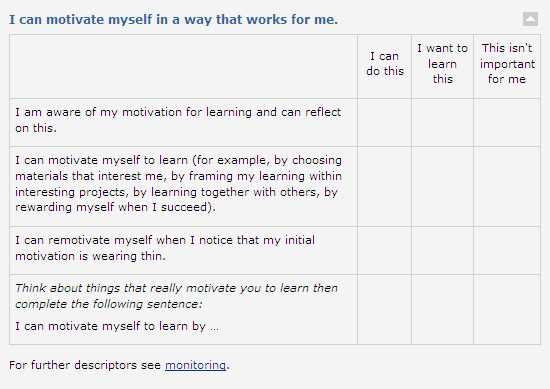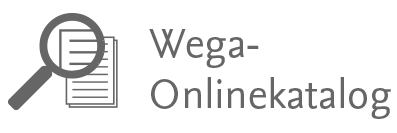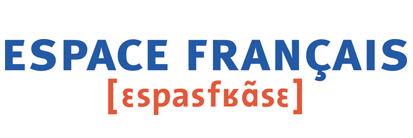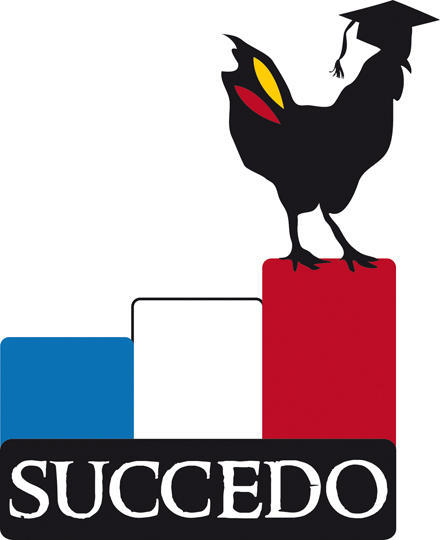Self-assessment guidelines
Decide which components you wish to assess yourself. There is no set order in which to do this. You could, for example, just assess one or two elements and skip the rest. The blue headings contain general descriptors of what an autonomous learner can probably already do, for example:

If you click on the plus symbol next to the headings, more detailed descriptors appear, for example:

When a heading catches your attention, open the detailed description, print out the page and mark the statements which you feel best describe your competencies.
Enter the statements in column 1 (I can do this) of your self-assessment. In column 2 (I want to learn this), enter your goals regarding things that you can’t currently do, but want to learn to do. Enter things which are not important for you in column 3 (This isn’t important for me). Use the following symbols:
|
Column 1 I can do this |
Column 2 I want to learn this |
Column 3 This isn't important for me |
|
V I can't do this so well VV I can normally do this VVV I can do this well and easily |
! this is my goal !! this is a priority for me |
X this isn't important for me |
With some descriptors several answers are possible. Mark all the answers which apply best to you and enter for each your self-assessment and goals in column 1 and 2. You might want to add descriptors for some points.
At the end of each component you can add further competencies and/or goals in your own words.
Results of the self-assessment
This checklist is intended to aid your reflection on your independent learning skills and goals. There are no right and wrong answers. If you answer honestly, the answers will provide an accurate snapshot of where your strengths and weaknesses are with regard to autonomous learning. They form a basis from which you can set priorities and plan your future learning
When you have completed the self-assessment read over your answers again in order to gain an overview. If you have marked most of the statements in one component with VV or VVV, then this indicates that you consider yourself to be good in this area. Pay special attention to statements which you have marked with V and with ! or !!. These are the areas on which more work is needed.
At the learner advising service at the self access centre we can provide you with personal feedback on your self-assessment and discuss strategies to further develop your autonomous learning skills.
Contact: For further questions about the descriptors or for feedback, please write to: tassinar@zedat.fu-berlin.de.


